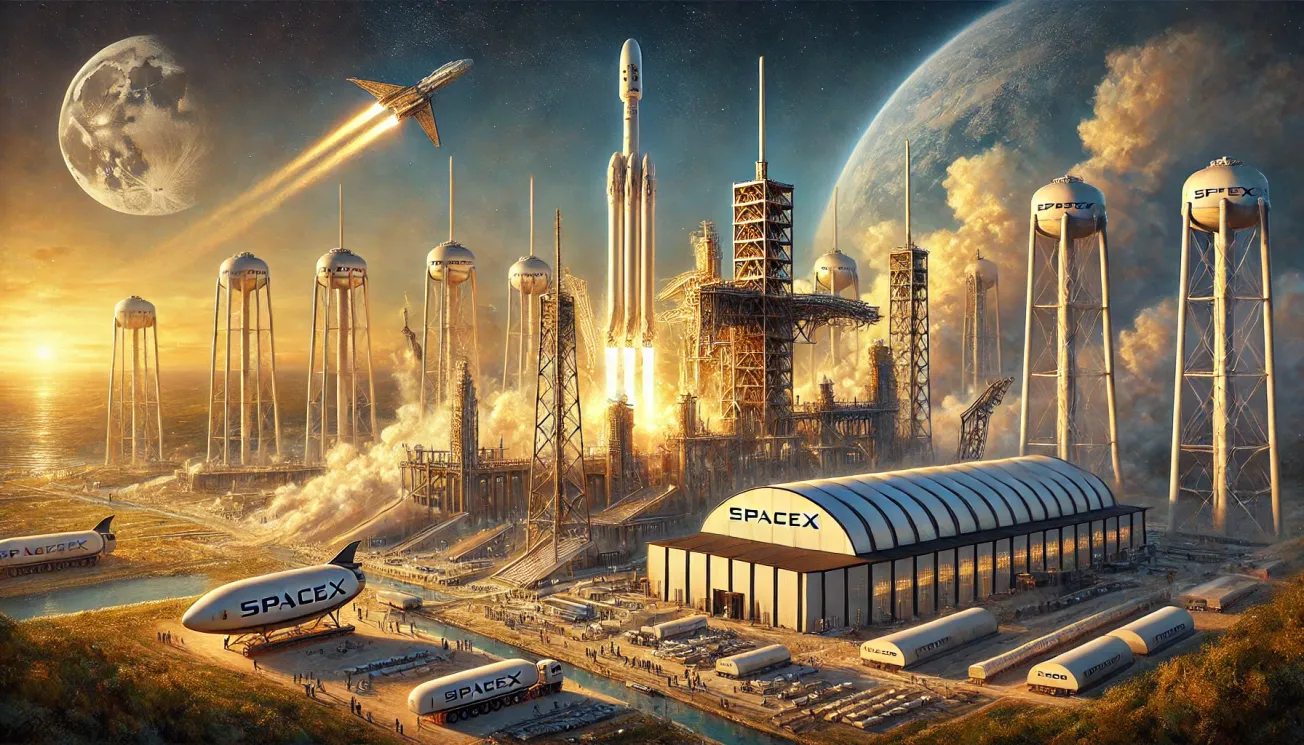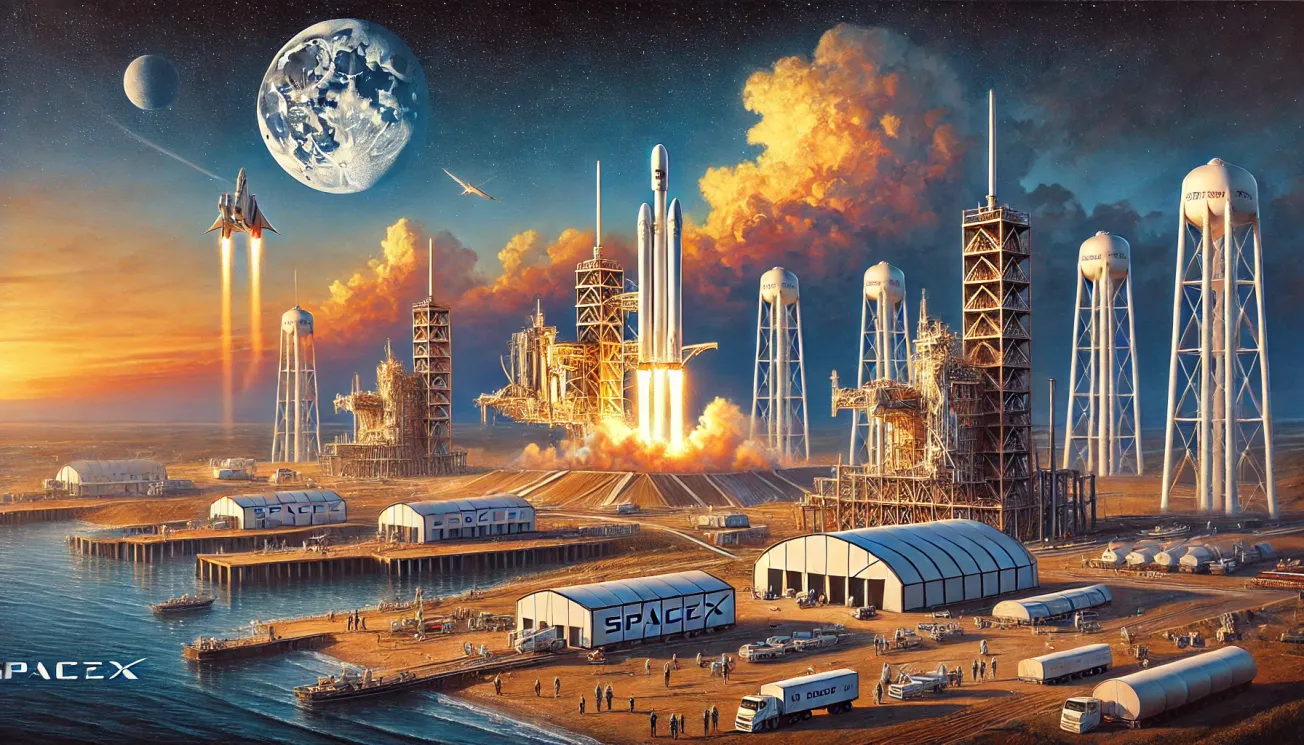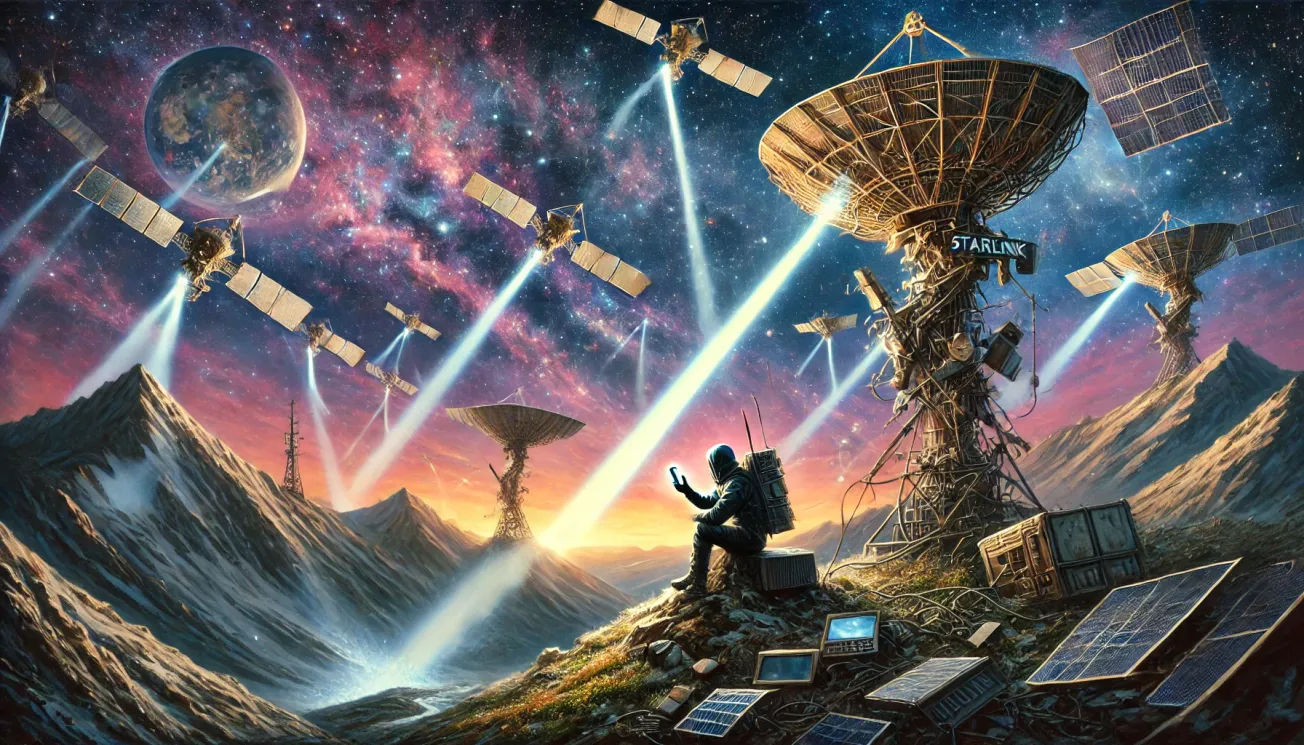Table of Contents
Introduction
2025 is shaping up to be SpaceX’s busiest year yet, with an unprecedented number of launches across multiple mission types. From weekly Starlink deployments to high-stakes crewed missions and cutting-edge science payloads, the company is accelerating toward its vision of a fully reusable, spacefaring future.
At the heart of this ambitious schedule are two major developments:
1️⃣ Starship’s transition from testing to operational flights, bringing humanity one step closer to the Moon and Mars.
2️⃣ The rapid expansion of the Starlink satellite constellation, which will further cement SpaceX as the dominant force in global satellite broadband.
With dozens of Falcon 9 launches already completed, upcoming missions will see more astronauts heading to space, major science projects taking flight, and national security satellites deployed into orbit. Starship’s long-awaited commercial launches are also expected to kick off, marking a turning point for deep space exploration.
In this article, we’ll break down the SpaceX 2025 launch schedule by mission type, covering:
✅ Starlink Missions – How many new satellites will be deployed this year?
✅ Crewed Spaceflight Missions – Who’s going to space, and what are the key ISS rotations?
✅ Science & National Security Payloads – The NASA and military launches shaping the future of space.
✅ Starship’s Future – When will we see its first true operational flights?
✅ Challenges & Delays – What could impact the schedule?
✅ How to Watch the Launches Live – Best ways to follow along in real time.
With over 100 planned launches, SpaceX is on track to break records and redefine what’s possible in space travel. Let’s take a closer look at what’s already launched and what’s coming next.
🛰️ SpaceX’s Starlink Deployment in 2025
Starlink, SpaceX’s low Earth orbit (LEO) satellite constellation, has become the world’s largest satellite internet provider, delivering broadband connectivity to remote and underserved areas globally. In 2025, SpaceX is accelerating its Starlink expansion with a record number of launches, adding thousands of new satellites to enhance coverage, speed, and reliability.
📡 The Role of Starlink in Global Connectivity
✔ Over 5,500 satellites already in orbit as of early 2025.
✔ More than 60 countries covered, with new expansion efforts underway in Africa, India, and Southeast Asia.
✔ Starlink Direct-to-Cell service rolling out, allowing standard smartphones to connect directly to satellites for text messaging, with voice and data planned for 2026.
✔ Starship is expected to eventually take over Starlink deployments, launching hundreds of satellites per mission, cutting costs and deployment times dramatically.
🚀 Recent & Upcoming Starlink Launches in 2025
SpaceX has been launching Starlink satellites at a blistering pace, sometimes multiple times per week. Below is a breakdown of completed and scheduled launches for 2025.
✅ Completed Starlink Launches (January–March 2025)
- January 6 – Starlink Group 6-71 (24 satellites)
- January 8 – Starlink Group 12-11 (21 satellites)
- January 10 – Starlink Group 12-12 (21 satellites)
- January 13 – Starlink Group 12-4
- March 13 – Starlink Group 12-21 (21 satellites)
- March 14 – Starlink Group 12-16
📅 Upcoming Starlink Launches
- March 18 – Starlink Group 12-25 (Cape Canaveral SLC-40)
- April–December 2025 – Ongoing Starlink launches expected weekly or more frequently.
🚀 How Many Starlink Satellites Will Launch in 2025?
💡 Estimated total: Over 1,500 new satellites this year, based on current launch cadence.
📈 Starlink’s ultimate goal: A mega-constellation of 42,000 satellites providing seamless global coverage.
🔄 Starlink V3 Satellites Coming Soon?
- SpaceX is rumored to be developing Starlink Version 3 satellites, which would feature higher bandwidth, better inter-satellite laser links, and improved power efficiency.
- These satellites will likely launch on Starship for bulk deployment.
🚀 Starship’s Future Role in Starlink Deployment
🚀 Current status: Falcon 9 is still the primary Starlink launch vehicle.
🌍 Future plans: Starship will replace Falcon 9, launching entire Starlink clusters at once.
🔄 Mass deployment: A single Starship could carry more satellites in one launch than multiple Falcon 9 flights combined.
📅 When Will Starship Start Launching Starlink?
- First full-scale Starlink Starship launch could happen in late 2025 or early 2026.
Conclusion: Starlink’s 2025 Expansion is Just the Beginning
📌 Key Takeaways:
✅ Starlink launches are happening at an unprecedented rate—almost weekly.
✅ The network is expanding into new markets, with Direct-to-Cell service rolling out.
✅ Starship will eventually take over Starlink deployments, marking a major technological leap.
🚀 Crewed Spaceflight Missions in 2025: SpaceX's Human Spaceflight Schedule
While Starlink dominates the launch schedule, SpaceX remains the leading private company in human spaceflight, ferrying astronauts to and from the International Space Station (ISS) and expanding private spaceflight opportunities. In 2025, SpaceX is set to launch multiple crewed missions, including NASA astronaut rotations, commercial space tourism, and groundbreaking private spacewalks.
🛰️ Why 2025 is a Big Year for SpaceX’s Crewed Missions
✔ Continued NASA partnership – Regular Crew Dragon launches to the ISS under NASA’s Commercial Crew Program.
✔ Growth of private spaceflight – Billionaires, researchers, and tourists paying to go to space with SpaceX.
✔ First private spacewalk – Polaris Dawn mission will feature the first-ever commercial spacewalk.
✔ Future of Starship human flights – While still in development, 2025 will lay the groundwork for Starship’s first crewed flights in 2026 and beyond.
🚀 NASA & ISS Crew Rotation Missions
As part of its ongoing partnership with NASA, SpaceX rotates astronauts to and from the ISS using Crew Dragon capsules launched aboard Falcon 9 rockets. These missions support scientific research, technology testing, and station maintenance.
✅ Completed NASA Missions
- March 12, 2025 – 🚀 Crew-10 Mission launched on Falcon 9, transporting four astronauts to the ISS.
📅 Upcoming NASA Missions
- July 2025 – 🚀 Crew-11 Mission will launch another set of astronauts to the ISS.
📌 Fun Fact: SpaceX has successfully launched and recovered every Crew Dragon mission since 2020, making it the most reliable spacecraft in NASA’s Commercial Crew Program.
🚀 Private & Commercial Crewed Spaceflights
Beyond NASA, SpaceX is pushing private space travel forward, allowing scientists, entrepreneurs, and even everyday civilians to go to space.
📅 Polaris Dawn – First Private Spacewalk (TBD 2025)
🚀 Led by billionaire Jared Isaacman, this mission will:
- Feature the first commercial spacewalk outside a SpaceX capsule.
- Fly higher than any previous Crew Dragon mission, surpassing the ISS altitude.
- Test new EVA (extravehicular activity) spacesuits designed for long-term space missions.
📅 Axiom Space’s Private ISS Mission (TBD 2025)
🚀 Axiom Space is sending another fully private crew to the ISS, as part of their goal to build a commercial space station by 2030.
📌 What’s Special? This mission could include scientists, celebrities, or researchers conducting experiments for commercial space applications.
🚀 The Future: When Will Starship Carry Humans?
While Starship’s first crewed flights are still a few years away, 2025 is a pivotal year for testing the technology needed for human missions.
✔ NASA’s Artemis Program: Starship is expected to land astronauts on the Moon in 2027.
✔ First Private Starship Flight: Could happen in 2026 or later, carrying billionaire space tourists.
✔ First Crewed Mars Flight: Elon Musk’s goal is to send humans to Mars by 2029, with early test missions potentially launching by 2027.
Conclusion: Human Spaceflight is Expanding Rapidly
📌 Key Takeaways:
✅ NASA continues to rely on SpaceX for ISS crew rotation missions.
✅ Private missions like Polaris Dawn are pushing boundaries, including the first private spacewalk.
✅ Starship won’t carry humans in 2025, but this year’s tests will set the stage for future missions.
🚀 Science & National Security Missions in 2025: SpaceX’s Role in Cutting-Edge Space Research & Defense
While SpaceX is best known for Starlink and crewed missions, it also plays a crucial role in scientific research and national security. In 2025, SpaceX will launch vital NASA missions, classified military payloads, and advanced Earth-monitoring satellites, contributing to planetary defense, space exploration, and global security.
🛰️ Why These Missions Matter
✔ NASA relies on SpaceX for launching key science missions, including space probes, climate-monitoring satellites, and lunar rovers.
✔ The U.S. military and intelligence agencies use SpaceX to deploy secure communications satellites, missile defense systems, and surveillance tech.
✔ Global institutions like the European Space Agency (ESA) trust SpaceX for launching Earth observation and disaster response satellites.
🚀 Major Science Missions in 2025
These missions will advance space exploration, climate science, and planetary research.
🌍 October 2025 – NASA’s IMAP Mission (Interstellar Mapping and Acceleration Probe)
📌 Mission Goal: Study the boundary of the heliosphere, the bubble-like region surrounding our solar system.
🔍 Why It Matters:
- Helps scientists understand how cosmic rays and solar wind interact with interstellar space.
- Provides insights into how Earth’s atmosphere is shielded from dangerous radiation.
🚀 Launch Vehicle: Falcon 9
🌊 November 2025 – Sentinel-6B Earth Observation Satellite
📌 Mission Goal: Monitor global sea levels, helping track climate change and rising oceans.
🔍 Why It Matters:
- Part of an international collaboration between NASA, NOAA, ESA, and EUMETSAT.
- Helps predict coastal flooding and climate-related weather patterns.
🚀 Launch Vehicle: Falcon 9
🌕 December 2025 – NASA’s VIPER Lunar Rover (Griffin Mission 1)
📌 Mission Goal: Search for water ice on the Moon’s south pole to support future lunar colonization.
🔍 Why It Matters:
- Data from VIPER will help NASA prepare for human Moon landings under Artemis.
- A key step toward using lunar ice for fuel production and sustainability on the Moon.
🚀 Launch Vehicle: Falcon Heavy
🚀 National Security & Military Missions in 2025
SpaceX is a major launch provider for the U.S. Department of Defense (DoD), National Reconnaissance Office (NRO), and Space Force. These missions involve highly classified payloads, often related to missile defense, intelligence gathering, and global military communications.
🛰️ September 2025 – Tranche 1 Transport Layer B
📌 Mission Goal: Expand the U.S. missile tracking and early warning system.
🔍 Why It Matters:
- Part of the Space Development Agency’s (SDA) plan for an advanced military satellite network.
- Will provide real-time tracking of hypersonic missiles, a growing threat in modern warfare.
🚀 Launch Vehicle: Falcon 9
📡 Q2 2025 – Globalstar Third Gen Sat Mission 1
📌 Mission Goal: Upgrade global satellite communications for military and government use.
🔍 Why It Matters:
- Supports secure, high-speed military comms in remote areas.
- Could provide backup satellite connectivity for emergency situations.
🚀 Launch Vehicle: Falcon 9
🔒 Other Classified Military Missions (TBD 2025)
- SpaceX has multiple secretive national security payloads scheduled, likely involving:
- Spy satellites for global surveillance.
- Missile defense technology for countering hypersonic threats.
- Secure battlefield communications networks.
🚀 Launch Vehicle: Likely Falcon 9 or Falcon Heavy.
📌 The Growing Importance of SpaceX in National Security
✔ The U.S. military is increasingly dependent on SpaceX, especially as tensions rise in global geopolitics.
✔ SpaceX’s Starshield program (a military-focused version of Starlink) will play a growing role in secure communications.
✔ SpaceX is outcompeting traditional defense contractors, launching faster and cheaper than rivals like ULA (United Launch Alliance).
Conclusion: 2025 is a Critical Year for Science & Security Missions
📌 Key Takeaways:
✅ NASA will use SpaceX for planetary research, climate science, and Moon exploration.
✅ The U.S. military is relying on SpaceX for missile defense and intelligence missions.
✅ SpaceX is becoming a dominant force in national security spaceflight, surpassing traditional aerospace contractors.
🚀 Starship Missions & Future Plans: The Next Giant Leap for SpaceX
While Falcon 9 and Falcon Heavy continue handling most of SpaceX’s launches in 2025, Starship—the fully reusable, next-generation rocket—is poised to revolutionize space travel. This year marks a turning point as Starship transitions from experimental test flights to real-world missions, laying the groundwork for human missions to the Moon and Mars.
🌍 Why 2025 is a Crucial Year for Starship
✔ Starship’s first semi-operational flights – Moving beyond test flights into actual cargo missions.
✔ In-orbit refueling tests – A critical technology for future Moon and Mars missions.
✔ Potential first Starship Starlink deployment – Starship could replace Falcon 9 for mass satellite launches.
✔ NASA and Artemis program milestones – Starship is preparing for the first lunar landing under Artemis in 2027.
🚀 Starship Test Flights in 2025
After years of prototype explosions and breakthroughs, SpaceX is entering the next phase of Starship testing. Here’s what’s expected this year:
✅ March 2025 – Starship Flight 8 (Completed)
📌 Mission Goal: Simulated Starlink deployment & booster recovery tests.
🔍 Key Achievements:
- Successfully launched from Starbase, Texas.
- Carried Starlink simulator satellites to low Earth orbit.
- Improved booster return data, inching closer to full reusability.
📅 April 2025 – Starship Flight 9 (Planned)
📌 Mission Goal: First real payload deployment test (possibly Starlink v3 satellites).
🔍 Why It Matters:
- First Starship launch with an actual working cargo mission.
- If successful, could pave the way for Starship to take over Starlink launches from Falcon 9.
📅 H2 2025 – First Orbital Refueling Test
📌 Mission Goal: Transfer fuel between two Starships in orbit, a key step for deep-space missions.
🔍 Why It Matters:
- NASA requires this capability for Artemis Moon landings.
- Enables long-duration Starship missions to Mars and beyond.
📅 Late 2025 – First Attempted Booster Catch with Chopsticks
📌 Mission Goal: Mechazilla tower at Starbase to “catch” a returning Super Heavy booster.
🔍 Why It Matters:
- If successful, it eliminates the need for ocean landings.
- Would make Starship the first fully reusable orbital-class rocket.
🌕 Starship’s Role in Future Moon & Mars Missions
🚀 NASA’s Artemis Program
- NASA has contracted Starship to land astronauts on the Moon as part of Artemis III (2027) and beyond.
- Lunar variant of Starship is being designed without heat shields or flaps, optimized for Moon landings.
🚀 First Crewed Starship Mission (2026?)
- SpaceX could fly private astronauts aboard Starship as early as 2026.
- The DearMoon Project, led by Japanese billionaire Yusaku Maezawa, was initially planned for 2024 but has been delayed indefinitely.
🚀 The Mars Dream: Elon Musk’s Vision
- Musk’s ultimate goal: Send humans to Mars by 2029.
- First uncrewed cargo Starship missions to Mars could happen in 2027 or 2028.
📌 What’s Holding Starship Back? Challenges & Delays
While 2025 is a breakthrough year for Starship, there are still major hurdles to overcome:
❌ Regulatory Delays – The FAA’s environmental reviews are slowing down the approval of frequent Starship launches.
❌ Heat Shield Issues – Starship’s tiles still need to survive full reentry before a human mission is possible.
❌ Raptor Engine Upgrades – SpaceX is improving Raptor 3 engines for higher performance and reliability.
Conclusion: 2025 is the Year Starship Proves Itself
📌 Key Takeaways:
✅ Starship test flights are moving beyond prototypes and into real missions.
✅ First in-orbit refueling test expected this year.
✅ Starship could launch its first working Starlink payload in late 2025.
✅ Major challenges remain, but progress is accelerating.
⚠️ Challenges & Delays: Why SpaceX’s 2025 Launch Schedule is Subject to Change
Despite SpaceX’s unmatched launch cadence, delays and obstacles are an inevitable part of spaceflight. While dozens of missions are planned for 2025, not all will launch on time. Some may be rescheduled, reconfigured, or even canceled due to technical, regulatory, and environmental challenges.
This section explores the key factors that could disrupt SpaceX’s ambitious launch schedule in 2025.
🚀 1. Regulatory & FAA Delays
📌 The Challenge: Before any launch, SpaceX must secure Federal Aviation Administration (FAA) approvals, which can delay schedules.
🔍 Key Issues:
- Starship Environmental Reviews – The FAA requires updated environmental impact studies for Starship’s high-frequency launches.
- Restricted Airspace Conflicts – The FAA must coordinate airspace closures, which can interfere with commercial flights.
- National Security Restrictions – Some military payloads require additional governmental clearances, slowing down launch approvals.
📌 Recent Example: The FAA grounded Starship for months in 2023 due to environmental concerns at Starbase, Texas. Similar reviews could slow down Starship’s 2025 launch cadence.
🔧 2. Technical Challenges & Vehicle Readiness
📌 The Challenge: SpaceX is rapidly improving Falcon 9, Falcon Heavy, and Starship, but new technology brings unexpected failures and redesigns.
🔍 Key Risks:
- Starship’s Heat Shield Needs More Testing – Thousands of heat-resistant tiles must survive reentry for future crewed missions.
- Raptor Engine Reliability – The Raptor 3 engine is still being optimized for higher efficiency and power.
- Booster Catch System (Mechazilla) – The first attempted "chopstick catch" of a Super Heavy booster could fail, delaying full reusability.
📌 Recent Example: Starship Flight 4 in 2023 had heat shield tile loss and engine failures, proving more improvements are needed before human missions.
🌩️ 3. Weather & Environmental Disruptions
📌 The Challenge: Extreme weather conditions can postpone launches for days or weeks, affecting schedules.
🔍 Key Weather Risks:
- Hurricanes & Tropical Storms – Florida’s Cape Canaveral is vulnerable to hurricane season (June–November).
- High Winds & Lightning – SpaceX frequently postpones launches due to upper-atmosphere wind shear and lightning storms.
- Extreme Cold & Snow – Vandenberg Space Force Base (California) sees fog, snow, and freezing temperatures affecting launches.
📌 Recent Example: In 2022, multiple Starlink launches were delayed due to storm conditions near Cape Canaveral.
💰 4. Supply Chain & Resource Limitations
📌 The Challenge: SpaceX builds its own rockets but relies on third-party suppliers for key components like microchips, propellants, and composite materials.
🔍 Key Risks:
- Global supply chain disruptions (e.g., chip shortages) could affect Starlink satellite production.
- Delays in propellant supply (liquid methane, liquid oxygen) could limit Starship’s ability to launch frequently.
- Expansion of launch infrastructure at Starbase and Cape Canaveral takes time.
📌 Recent Example: The global semiconductor shortage in 2021 delayed Starlink production, proving that even SpaceX is vulnerable to supply chain bottlenecks.
📉 5. Market & Financial Pressures
📌 The Challenge: SpaceX is rapidly expanding operations, but financial constraints could slow down certain projects.
🔍 Key Risks:
- Starship development costs remain extremely high, requiring continuous funding.
- Starlink profitability remains uncertain as SpaceX invests billions in satellite production and expansion.
- Increased competition from Amazon’s Kuiper, OneWeb, and China’s satellite networks could impact Starlink’s market share.
📌 Recent Example: SpaceX had to raise $750 million in funding in 2023 to sustain Starship and Starlink development.
🚀 Can SpaceX Overcome These Challenges?
Despite these hurdles, SpaceX has consistently found ways to overcome delays, innovate rapidly, and maintain its dominance in the aerospace industry.
📌 Key Takeaways:
✅ FAA approvals remain a bottleneck for Starship’s expansion.
✅ Technical hurdles like booster catching and heat shield durability need further testing.
✅ Weather remains an unpredictable challenge for launch schedules.
✅ Supply chain issues and financial constraints may impact Starship’s 2025 rollout.
Even with inevitable setbacks, SpaceX is still on track for a record-breaking year, with over 100 potential launches in 2025.
🎥 How to Watch SpaceX Launches Live: The Ultimate Guide
With SpaceX launching more frequently than ever, keeping track of upcoming missions and watching launches live has never been easier. Whether you're a casual fan, space enthusiast, or hardcore follower, here’s how you can stay updated and experience every launch in real time.
🚀 Best Platforms for Watching SpaceX Launches Live
📌 1. SpaceX’s Official Livestreams (Best Source)
Where to Watch:
- 🖥️ SpaceX Website – The official hub for SpaceX’s launch schedule and live streams.
- 📺 YouTube (SpaceX Official Channel) – High-definition live coverage of every launch.
- 📱 @SpaceX on Twitter/X – Provides launch updates, mission details, and live links.
✔ Why Use It?
✅ Direct feed from SpaceX mission control.
✅ High-definition, multi-angle views of the rocket.
✅ Real-time updates and commentary from SpaceX engineers.
📌 2. NASA TV (For Crewed Missions & Science Payloads)
Where to Watch:
- 🖥️ NASA TV – NASA’s official live-streaming service.
✔ Why Use It?
✅ Covers NASA-related SpaceX missions, such as Crew Dragon flights to the ISS.
✅ Features in-depth discussions with NASA scientists and astronauts.
📌 3. Third-Party Space Enthusiast Streams (For Exclusive Commentary & Community Chat)
- 🚀 Everyday Astronaut (YouTube) – Tim Dodd provides expert commentary with deep-dive analysis.
- 🚀 NASASpaceflight (YouTube) – Insider coverage, including Starship developments at Starbase.
- 🚀 LabPadre (YouTube) – 24/7 Starbase livestream, tracking Starship testing & launches.
✔ Why Use It?
✅ More detailed technical explanations than official SpaceX streams.
✅ Interactive community chats where fans discuss missions in real time.
🗓️ How to Track Upcoming SpaceX Launches
📌 1. SpaceX Launch Schedule (Official Source)
🌍 SpaceX Launches Page – Lists all upcoming missions with live countdown timers.
📌 2. Spaceflight Tracking Websites
- 🚀 Spaceflight Now – The most up-to-date launch schedule for SpaceX and other space agencies.
- 🚀 Next Spaceflight – Tracks launch dates, times, and payload details.
- 🚀 RocketLaunch.live – Provides real-time alerts for upcoming launches.
📌 3. SpaceX’s Social Media Alerts
📱 Follow @SpaceX on X/Twitter for live countdown updates, delays, and launch confirmations.
📍 Best Places to Watch a SpaceX Launch in Person
If you’re lucky enough to see a launch in person, here are the best viewing locations:
📌 Cape Canaveral, Florida (Falcon 9, Falcon Heavy Launches)
🔭 Best Viewing Spots:
- 🚀 Jetty Park Beach & Pier – Closest public view (~10 miles from launch pads).
- 🚀 Playalinda Beach (Canaveral National Seashore) – Unobstructed views, closer to Kennedy Space Center (KSC).
- 🚀 Kennedy Space Center Visitor Complex – VIP viewing areas (requires tickets).
📌 Vandenberg Space Force Base, California (West Coast Launches)
🔭 Best Viewing Spots:
- 🚀 Hawk’s Nest Viewpoint – Closest public spot near Vandenberg SFB.
- 🚀 Lompoc’s Surf Beach – Good oceanfront viewing location.
📌 Starbase, Texas (Starship Launches)
🔭 Best Viewing Spots:
- 🚀 Boca Chica Beach – Closest public area near Starship launch site.
- 🚀 Isla Blanca Park (South Padre Island) – Best full view of Starship launches.
🔔 How to Get Live Launch Alerts
✔ Enable Notifications on YouTube – Subscribe to SpaceX’s YouTube channel and click the 🔔 bell icon.
✔ Follow SpaceX on X/Twitter – Turn on tweet notifications for real-time updates.
✔ Join Discord & Reddit Communities –
- 🚀 r/spacex – The largest SpaceX fan community for live discussions.
- 🚀 Everyday Astronaut Discord – Real-time chat for space enthusiasts.
Never Miss a SpaceX Launch in 2025
📌 Key Takeaways:
✅ SpaceX’s YouTube & website provide official live streams.
✅ NASA TV covers crewed missions & science payloads.
✅ Third-party space streams offer expert breakdowns & community engagement.
✅ Launch tracking websites provide real-time schedules & alerts.
✅ Best launch viewing locations are in Florida, California, and Texas.
🚀 What to Expect in 2025 and Beyond
2025 is shaping up to be SpaceX’s busiest and most groundbreaking year yet. With over 100 planned launches, SpaceX is setting new records in reusability, launch frequency, and space exploration. This year marks a transition from established Falcon 9 operations to the next era of space travel with Starship.
📌 Key Takeaways from SpaceX’s 2025 Launch Schedule:
✅ Starlink Expansion – Dozens of new satellite launches will enhance global internet coverage.
✅ Crewed Spaceflight Growth – NASA, private missions, and Polaris Dawn will push human spaceflight further.
✅ National Security & Science Missions – SpaceX will launch critical NASA and military payloads, impacting Earth science and global security.
✅ Starship’s Breakthrough Year – 2025 will be the year Starship proves itself, moving from test flights to real missions.
✅ Challenges Ahead – SpaceX must overcome regulatory delays, technical hurdles, and weather disruptions to stay on schedule.
🚀 The Future: What Comes After 2025?
- First Starship cargo flights in 2026.
- Artemis Moon missions moving closer to human lunar landings in 2027.
- Mars missions on the horizon, with 2029 as the earliest possible crewed flight.
🚀 Final Thoughts: SpaceX is Reshaping Space Travel
As SpaceX continues pushing the boundaries of what's possible, 2025 is a year of rapid expansion, technological breakthroughs, and critical milestones. Whether it's launching astronauts, deploying satellites, or preparing for deep space exploration, this year will define the next decade of spaceflight.
🌍 Want to stay updated?
📡 Follow SpaceX live streams, track launches, and witness history in the making!
🚀 The future is here—and it’s launching at record speed.










